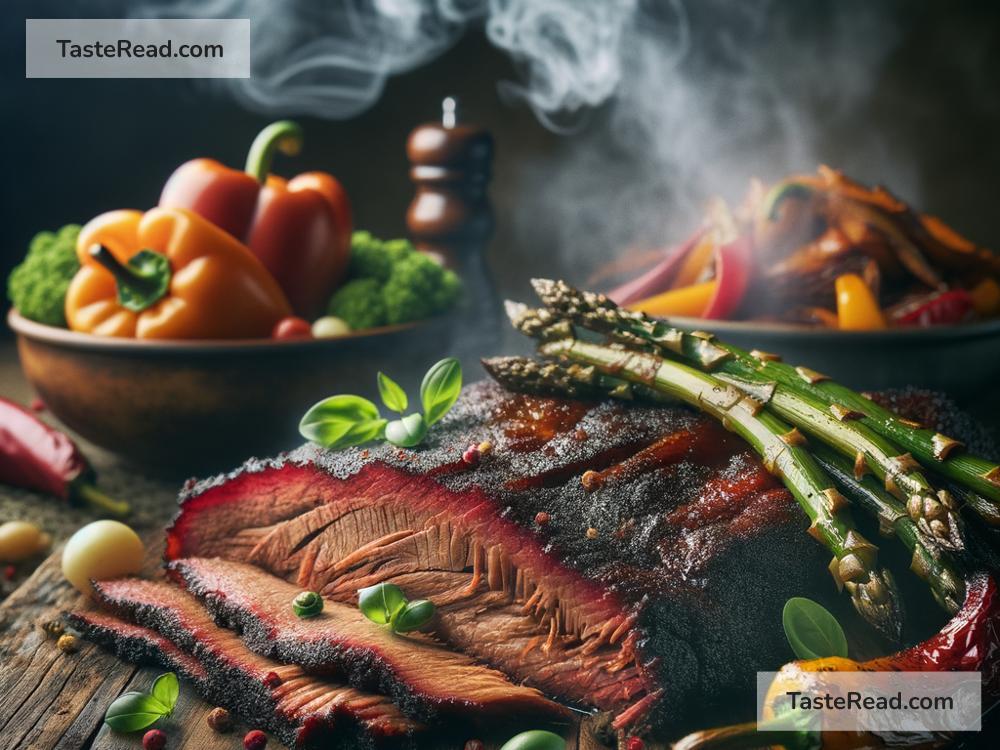Advanced Techniques for Smoking Meats and Vegetables: Elevate Your BBQ Game!
Welcome, BBQ enthusiasts! Whether you’re a seasoned grill master or just getting started, there’s always something new to learn in the world of smoking meats and vegetables. Smoking adds depth, complexity, and that irresistible smoky flavor we all crave. Today, we’re exploring some advanced techniques that will elevate your smoking game. Let’s dive in!
1. Choosing the Right Wood
The foundation of any good smoking process is the choice of wood. Different woods impart different flavors, so selection is crucial:
– Fruit Woods (Apple, Cherry, Peach): These woods are milder and slightly sweet, excellent for poultry and pork.
– Hardwoods (Hickory, Oak, Mesquite): These provide a stronger, more robust flavor, perfect for beef or lamb.
Mixing woods can create complex flavor profiles. For example, combining apple and hickory can give you both sweet and robust. Experimentation is key, but remember, less is often more. You don’t want to overpower your food.
2. Controlling Temperature and Smoke
The secret to perfect smoking is controlling the temperature and the amount of smoke. Aim for a consistent temperature and a thin, blue smoke. Thick white smoke can make your food taste acrid.
- Use a good thermometer: Monitoring your smoker’s temperature is critical. Aim for a steady 225-250°F for most meats.
- Adjust vents: Learn how your smoker’s vents work. Adjusting them can help control your temperature and smoke flow.
3. Brining and Marinating
Before you even think about smoking, consider brining or marinating your meats and vegetables. This step can add moisture and flavor, ensuring your food doesn’t dry out during the long smoking process.
- Brining: A salt-water solution that can also include herbs and spices. It’s great for poultry and pork.
- Marinating: This involves soaking your food in a mixture of oil, vinegar, herbs, and spices. It’s suitable for all types of meat and vegetables.
4. The Art of Mopping and Spritzing
During smoking, meats can lose moisture. To combat this, experienced smokers use mopping or spritzing:
– Mopping: involves “mopping” a liquid mixture onto the meat with a brush or mop. It adds moisture and flavor.
– Spritzing: involves spraying a fine mist of liquid (usually a mix of apple cider vinegar and water) over the meat.
Both methods add moisture and help develop a beautiful, flavorful crust on the meat. Be gentle, though; you don’t want to wash away your seasonings!
5. Mastering the Smoke Ring
That pinkish ring beneath the surface of smoked meats? That’s the smoke ring, a coveted indicator of perfectly smoked meat. It forms when nitrogen dioxide from the wood smoke reacts with the meat’s myoglobin. To enhance the smoke ring:
– Keep the surface moist: A moist surface helps absorb more smoke.
– Use a colder meat: Starting with colder meat can extend the time it takes to reach 140°F, thus extending the window in which the smoke ring can form.
6. Layering Flavors
Complex flavors come from layering, starting from the rub and ending with a finishing sauce:
– Rub: Apply your rub at least an hour before smoking. This can be a simple salt and pepper or a complex mix of spices.
– Injecting: For larger cuts, consider injecting with a flavor mixture. It ensures moisture and flavor deep inside.
– Glazing: In the last 30-60 minutes of cooking, apply a glaze. It gives a shiny, flavorful outer layer.
– Resting: Always let your meat rest before slicing. It redistributes the juices, ensuring it’s moist and flavorful.
7. Experiment with Vegetables
Smoking isn’t just for meats! Vegetables can also benefit greatly from the smoking process. Dense veggies like squash, potatoes, and carrots can be directly smoked, while softer types like tomatoes or bell peppers might be better wrapped or placed in a smoking basket. Smoked vegetables can add a unique twist to traditional dishes or be pureed into sauces for an extra layer of flavor.
In Conclusion
Mastering the art of smoking meats and vegetables is a journey, but it’s incredibly rewarding. Experimentation, patience, and a love for the craft are key. With these advanced techniques, you’re well on your way to creating unforgettable BBQ dishes that will impress your friends and family. Happy smoking!


